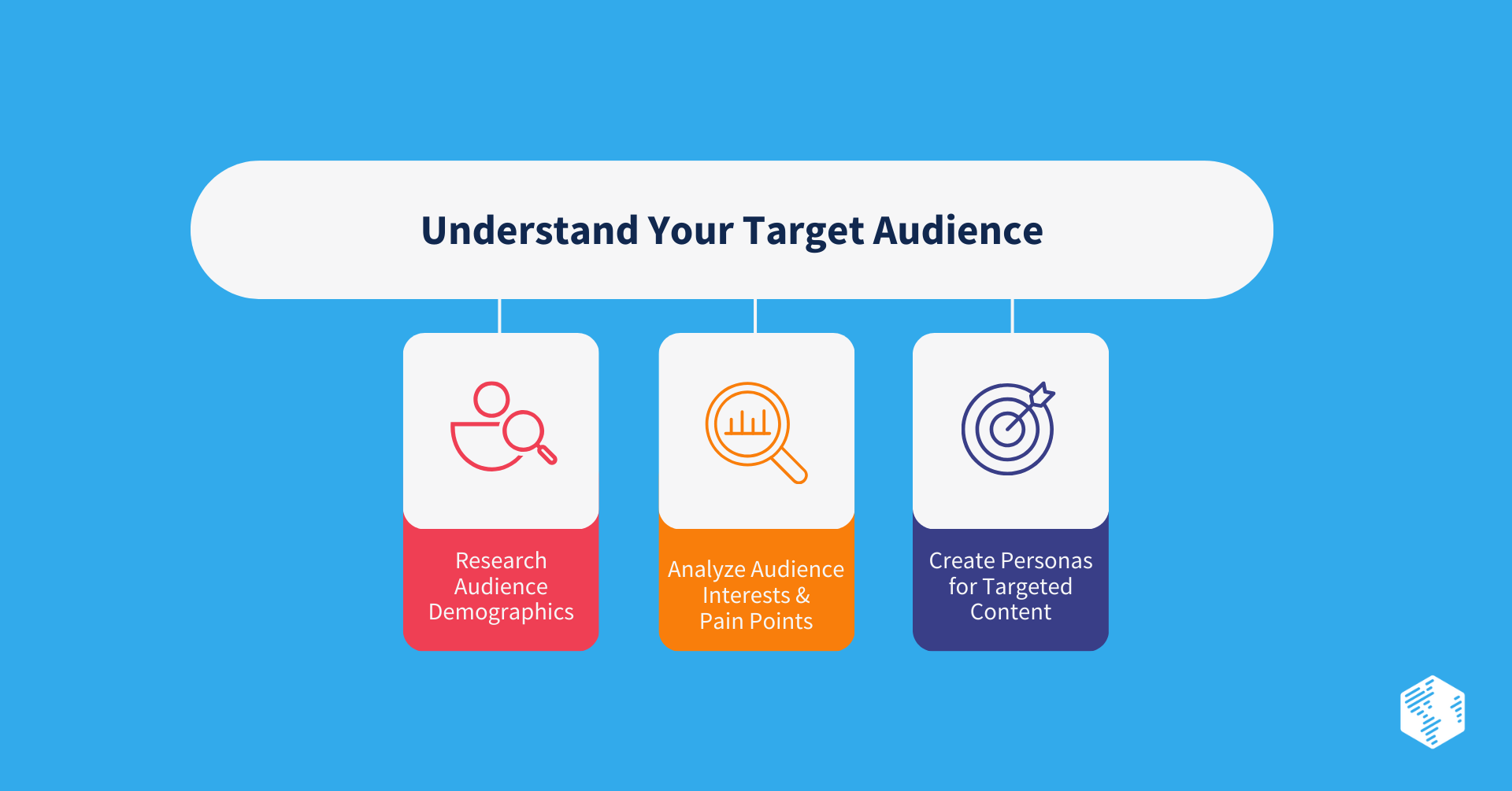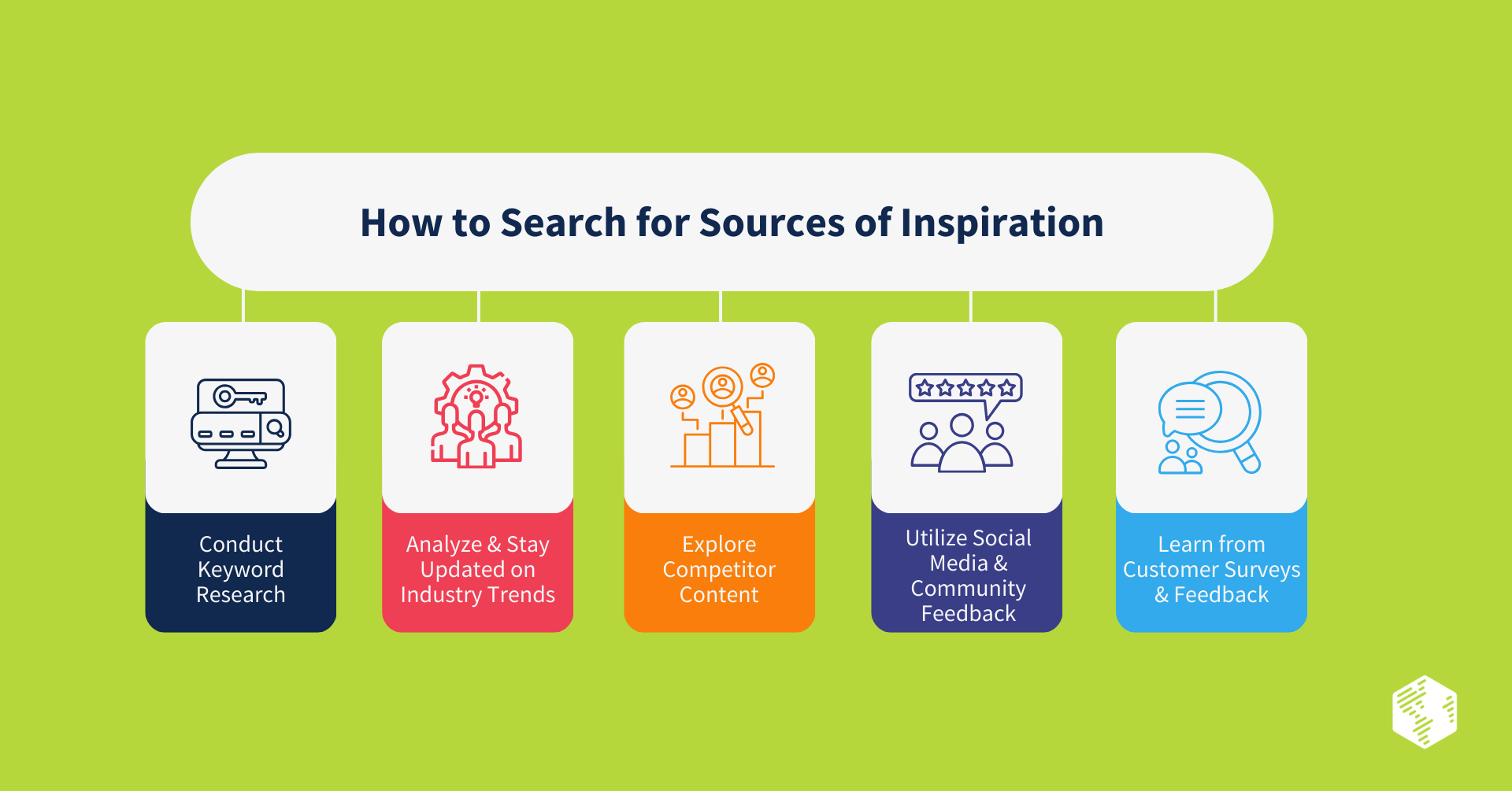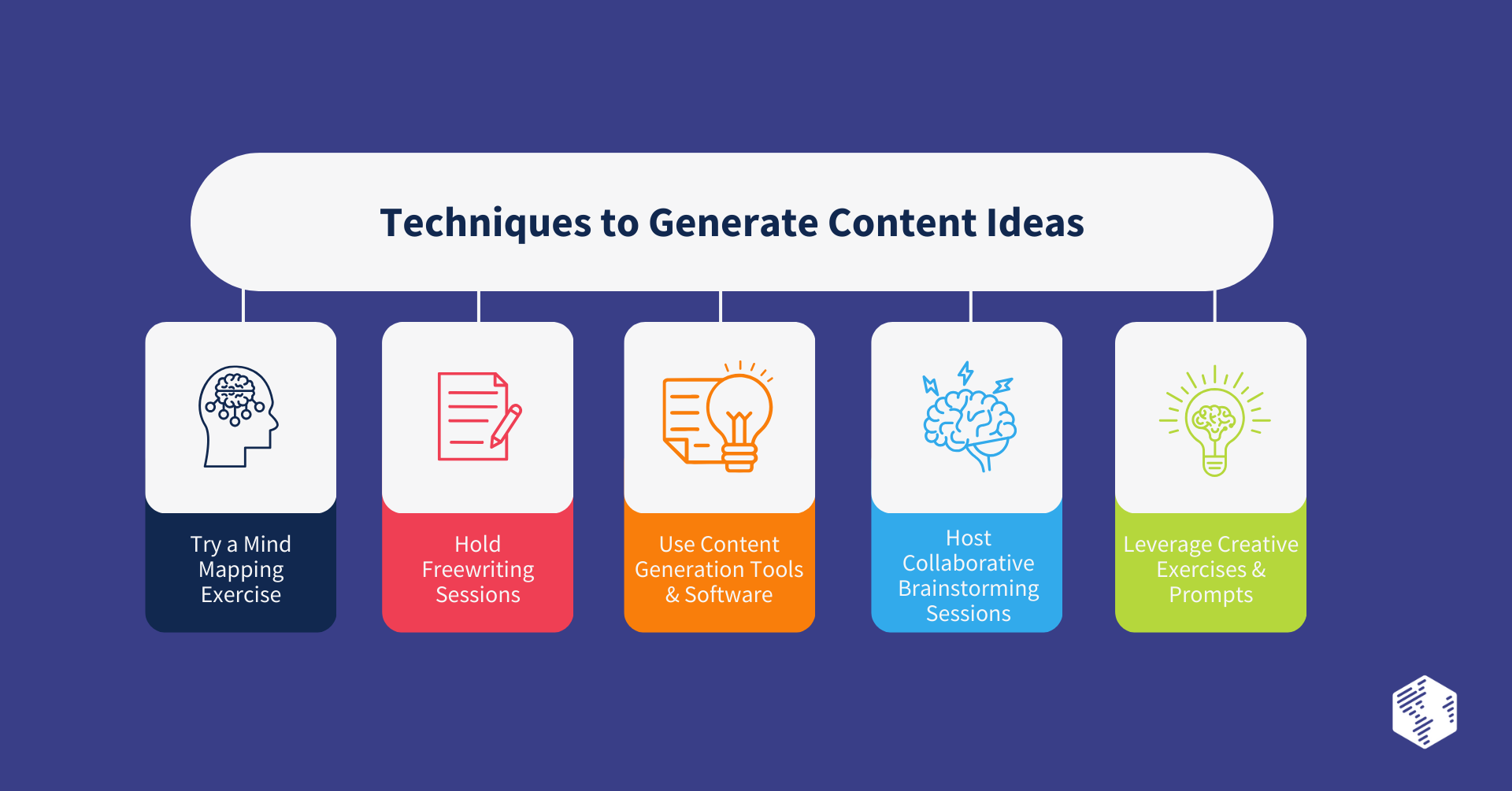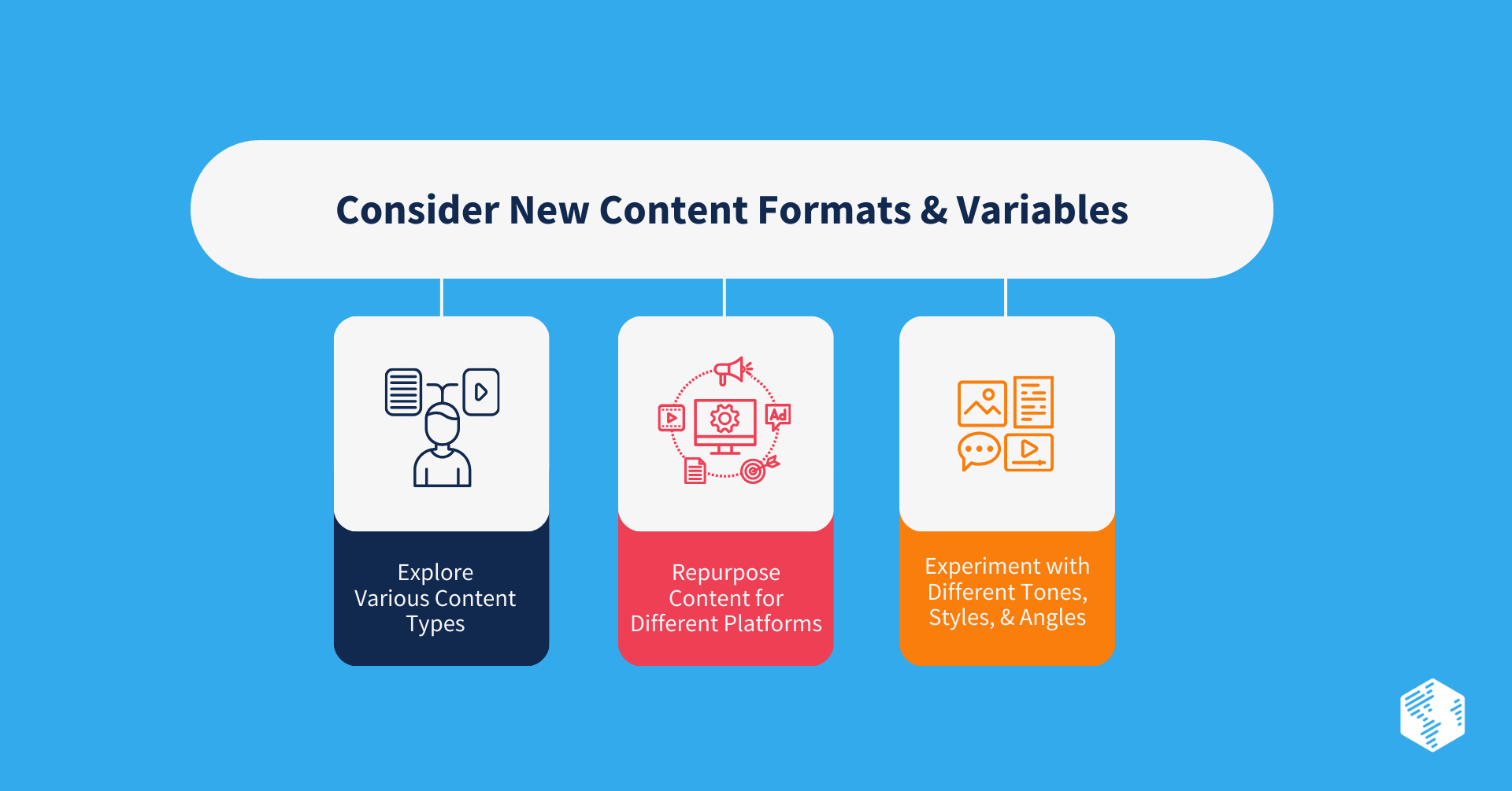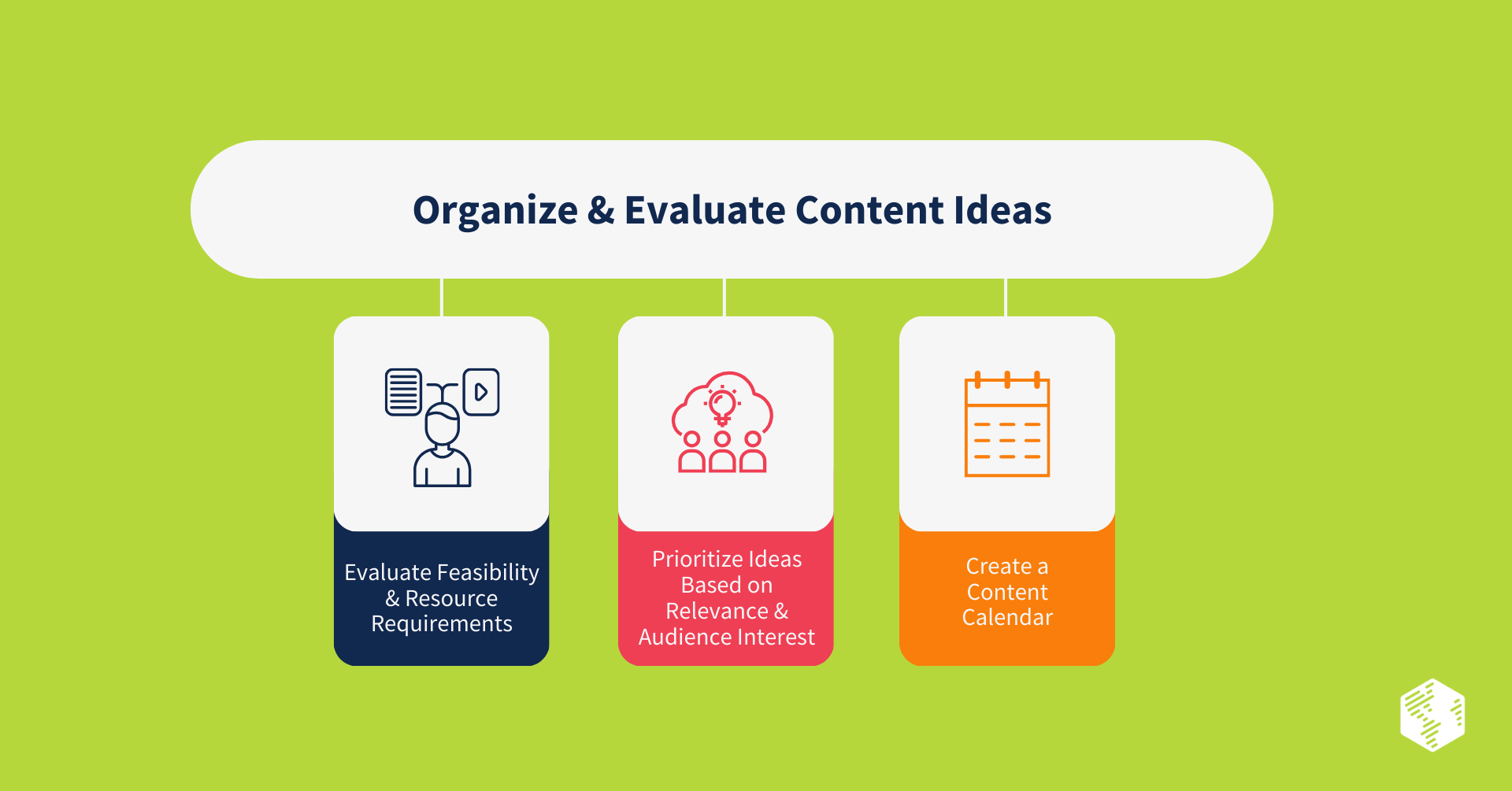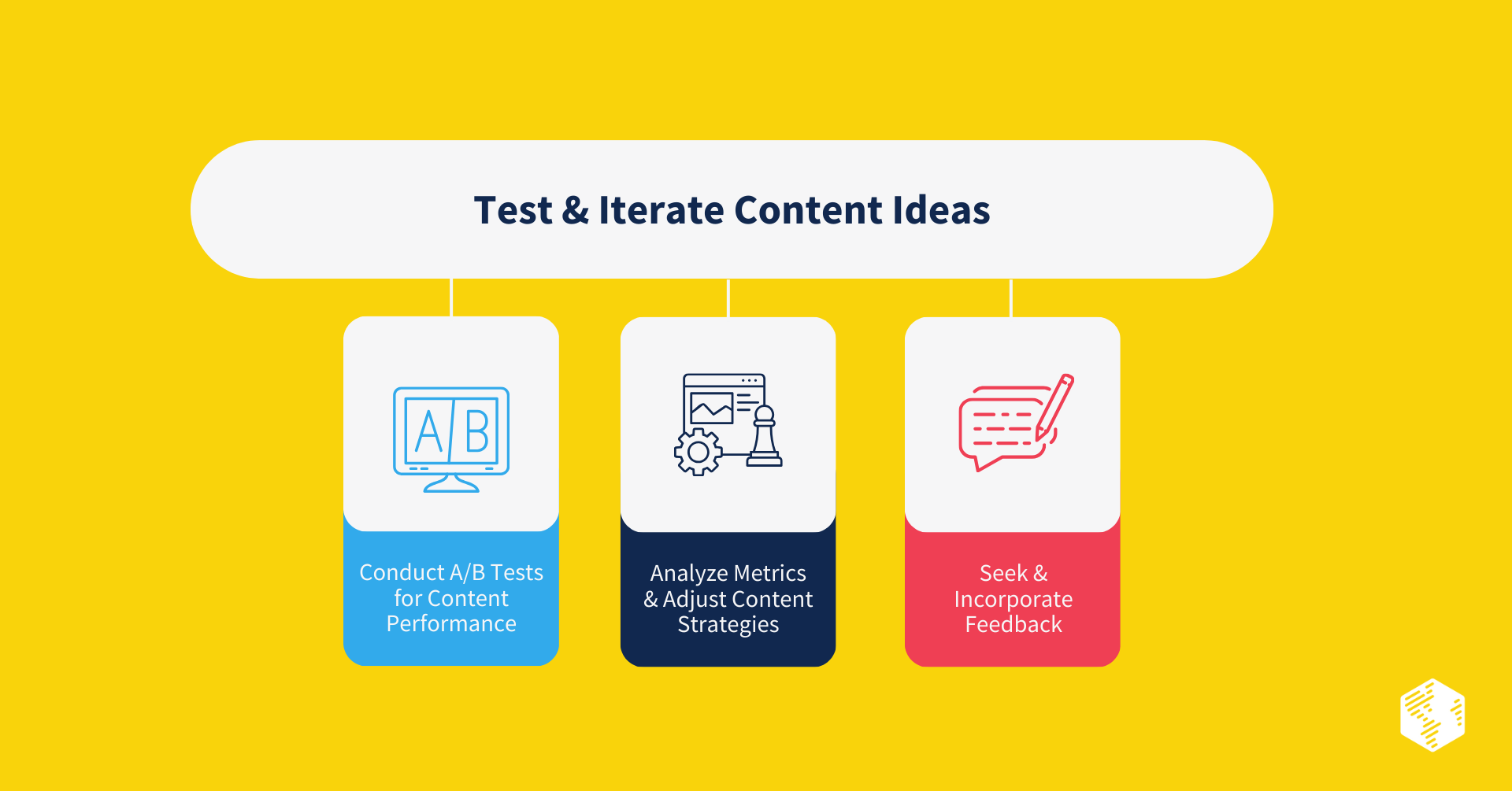Is there anything worse than staring at a blank page?
Whether you call it writer’s block, creative burnout, or artistic paralysis, having a lack of ideas is extremely frustrating—even more so when you know the value of developing original and compelling content for your business-to-business (B2B) marketing efforts but just can’t come up with anything.
Your mind is blank. Or worse: The few ideas you have are terrible.
What can you do?
What topics should you cover?
What kind of content should you create?
How can you turn the blank page into a list of engaging, captivating content ideas?
Fortunately, finding new content ideas doesn’t have to be so challenging. With the right content generation strategy in your back pocket, you can quickly develop unique, interesting, relevant content ideas that can help drive your business forward, gain the trust of your audience, and support your growth goals.
What Is Content Brainstorming?
Content brainstorming is the creative, unstructured process of generating a multitude of new and exciting ideas, topics, themes, and concepts that you can use to develop impactful, high-quality content that resonates with your audience.
By encouraging you to explore a wide range of perspectives, tapping into your imagination, and helping the creative juices flow, content brainstorming opens you up to a new world of B2B content possibilities.
Why Is Brainstorming Important for B2B Content Creation?
Constantly creating new content is a challenge for many B2B marketers. However, there are targets to hit, deadlines to meet, and key performance indicators (KPIs) to track. The blank page isn’t an excuse; you need an effective way to overcome mental blocks and think of new ideas—a lot of them. And fast.
When you or your B2B marketing team hit a creative roadblock, content brainstorming is a reliable way to boost creativity, generate a large number of ideas, and keep the content ideas flowing.
How to Brainstorm Creative Content Ideas
There are many different content brainstorming strategies you can use to find fresh, creative ideas for your B2B business, and we’ve created a list of proven methods to help you get started. The good news? They’re easy (and free!) to implement, whether you’re working remotely with a team, in-person at a conference table, or alone in your office.
Every person, team, business, and industry is different; some methods may be more successful than others. Try out a few of these strategies, discover which ones work best for you, and see what content ideas you can generate.
1. Understand Your Audience
Content brainstorming must start with your audience. You need to have a clear understanding of your target buyers if you’re going to create content that speaks to them, so audience research should guide your brainstorming efforts.
Research Audience Demographics
Who is your target audience? Research the basics: age, gender, location, income level, education level, industry, job title, buying preferences, and more. Collecting this type of data will help you create content to their liking.
Analyze Audience Interests & Pain Points
Understanding the needs, interests, pain points, and challenges of your target audience will give you valuable insight into the types of content that will solve their problems, address their pain points, and encourage them to make a purchase.
Create Personas for Targeted Content
Based on your audience research, create buyer personas and negative personas that you can use as the foundation of your B2B content. These personas will help you and your marketing team create content and campaigns with targeted messaging that speaks directly to the needs, motivations, and desires of your ideal buyers.
2. Search for Sources of Inspiration
Once you start keeping an eye out for content ideas, you’ll find sources of inspiration at every corner. Here are a few tried-and-true places to start your search.
Conduct Keyword Research
You’re likely familiar with the power of keyword research and search engine optimization (SEO). But have you considered how keyword research can be used to generate unique content ideas?
Using dependable SEO tools like Semrush or Ahrefs, identify and build a list of keywords relating to your brand, products, services, industry, or topic. Then, enter them into the platform to get more in-depth information, like their monthly search volume and difficulty as well as related questions and keywords. These insights are filled to the brim with opportunities for new content.
Analyze & Stay Updated on Industry Trends
Creating content relating to events and news in your industry is a great way to position your brand as a leader and establish your expertise. Therefore, keep up with industry trends to inform new topics and develop timely content ideas. Consider using tools like Google Alerts that will notify you when something significant happens in your industry so you can quickly develop and share content in response.
Explore Competitor Content
Exploring websites, blogs, social media posts, and other content from your competitors is a valuable method for generating new content ideas. By examining their content, you can discover which topics they cover—and, more importantly, which topics they don’t cover. It’s in these gaps where your brand can stand out and offer your audience something new.
Additionally, research how they connect with their customers. Is there a type or format of content they produce that seems particularly successful? What does that unveil about the interests and preferences of your audience? How can you fill in the gaps with a unique perspective and bring something new to the table?
Utilize Social Media & Community Feedback
Social media is an extremely effective source of inspiration for B2B content brainstorming and generation. Follow relevant hashtags, track brand mentions, look at what influencers in your industry are posting—what can you learn from the patterns you observe and insights you glean? Similarly, what questions are your followers asking? What excites and engages them?
Use social media as a tool for content brainstorming, and don’t hesitate to ask your digital community what types of content they want to see. There’s nothing better than going directly to the source.
Learn from Customer Surveys & Feedback
Your existing customers are a fountain of direct insight into the topics that interest them and the content formats that they prefer. Compile customer surveys and share customer feedback with your marketing team during brainstorming sessions so that you can generate content ideas that directly address the most pressing and timely issues your clients are facing.
3. Use Techniques to Generate Content Ideas
Telling stories, drawing attention, and creating memories are as old as humankind itself. Sure, the writing and creative fields have evolved since then, especially with the introduction of new technologies, but the core of it remains the same. Why not draw from classic brainstorming techniques as you generate B2B content ideas?
Try a Mind Mapping Exercise
Mind mapping is a simple and visual word association exercise perfect for content brainstorming—all you need is a pen and paper. (Or, of course, you can use mind mapping software online.)
Start with a broad topic in the middle of the page, and then write down as many subtopics you can think of that associate with it. Draw branches from the main topic to the associated topic, and keep branching out until you can’t come up with any more related ideas that could be added to the map. The result is a map of ideas that cluster together that you can use for content inspiration.
Hold Freewriting Sessions
Freewriting is a technique that involves writing continuously on a subject or topic for a set period of time. No editing, no stopping to think, no worrying about grammar or punctuation—just writing whatever comes to mind. It’s a great method to unlock your creative juices and is surprisingly successful at generating new ideas.
Set a timer for five or 10 minutes, write until it goes off, and see what your brain comes up with.
Use Content Generation Tools & Software
Content generation tools and software are specially designed to help writers, artists, and marketers brainstorm content ideas. These tools are ideal for situations in which you are looking for trending, timely, popular topics.
Most content idea generators work the same: When you enter a broad topic, word, or theme related to your industry or goals, the program will return a list of potential content ideas.
Host Collaborative Brainstorming Sessions
Another invaluable content brainstorming resource? Your customer-facing teams.
Host collaborative brainstorming sessions where members of your marketing, sales, customer success, and revenue operations teams can generate creative content ideas. Thanks to each person’s unique experiences and insights as well as to how each team interacts with prospects along the buyer’s journey, you can use these sessions to come up with a diverse range of content ideas that connect with customers at every stage of the sales funnel.
Leverage Creative Exercises & Prompts
There’s a reason creative exercises and writing prompts have withstood the test of time: They’re easy, effective, and engaging. Explore creative prompts and visual exercises online that you think you or your marketing team would find interesting, and put them to the test. For example, prompt your team to brainstorm content ideas relating to company failures and success. What can you learn by comparing them? How can you highlight successes and turn failures into relatable, informative content?
4. Consider New Content Formats & Variables
There’s a whole wide world of content out there. Don’t limit yourself to the same formats, variables, and topics you’ve always focused on; now is the time to delve into new ways of creating content.
Explore Various Content Types
Different content types and formats appeal to different audiences. Explore various content forms, such as videos, podcasts, infographics, blog posts, webinars, social media campaigns, ebooks, and white papers, to see what types resonate with your ideal customers.
Repurpose Content for Different Platforms
Why invest time, money, and resources into a content asset if you’re only going to use it once? Instead, for each piece of content you create, consider how you can repurpose it for different platforms, mediums, and formats. For example, turn a successful blog into a video, infographic, and ebook, or host a podcast where you answer the questions asked during a webinar.
By repurposing existing content, you create an opportunity to reach a new audience.
Experiment with Different Tones, Styles, & Angles
Another way to engage with a different segment of your target audience is to take some of your existing content and change its tone, style, or angle. Whether you decide to expand on a topic with a more authoritative voice to inform readers or transform static assets into interactive content, refreshing old content is an efficient way to create new content pieces and increase your overall content return on investment (ROI).
5. Organize & Evaluate Content Ideas
Not all the ideas you generate through content brainstorming will be winners. (And that’s the point: The goal of brainstorming is to come up with a wide range of possibilities—some good, some not so good.) Once you have a list of options, you can start to evaluate ideas, polish concepts, and pick the content ideas that will engage your target audience.
Evaluate Feasibility & Resource Requirements
Take a closer look at the topics and ideas you generated during your content brainstorming session. Which ideas are feasible? Which ideas are possible based on the resources at your disposal?
Topics that are impractical, unsuitable, or irrelevant can be discarded. Those that are feasible and possible can be turned into well-defined content concepts that you can use to support your B2B marketing campaigns and growth goals.
Prioritize Ideas Based on Relevance & Audience Interest
Remember that audience research you conducted and the personas you created? It’s time to refer to them again.
Prioritize the content ideas, topics, and formats that your target audience will find most interesting, relevant, informative, engaging, and valuable based on your understanding of their needs, pain points, and purchasing habits. Based on your analysis, you can focus on the most promising or timely content ideas.
Create a Content Calendar
Add the best ideas from your B2B content brainstorming efforts into a content calendar. Note that these ideas should be fleshed out at this point: They should be specific, with a defined format, voice, and call to action (CTA); include various deadlines to keep the content schedule on track; and have a point person (or point people) responsible for developing and distributing the content piece.
6. Test & Iterate Content Ideas
In a way, content is both an art and a science. We’ve talked about storytelling and craft; now, let’s go over the science part. Just like analysts in a laboratory environment test beakers full of chemicals, B2B marketers must test content to see what’s working (and what’s not).
By analyzing and improving upon the content ideas you have brainstormed, you can continue to increase your content ROI.
Conduct A/B Tests for Content Performance
A/B testing, or split testing, is a technique to discover which variation of a content piece is the most successful—however that success is defined. For example, creating two sets of newsletters or social posts will allow your marketing team to “test” which variant is most interesting and relevant to your audience. Conduct A/B tests to analyze the performance of content assets so you can optimize the outcome.
Analyze Metrics & Adjust Content Strategies
One of the best parts of creating digital content is that you can easily measure important performance data and conduct deep analysis on the results. Look at the analytics of your blogs, videos, webinars, landing pages, and other content pieces to gather insights. Then, based on your findings, you can adjust your content strategy to address issues and build upon areas of growth.
Seek & Incorporate Feedback
What’s the best way to see how your content is performing? Asking your target audience directly.
Create opportunities for prospects and existing customers to provide feedback on content pieces. By opening up comments on blog posts, sending out surveys after live webinars, or reaching out to leads after they download an ebook, you can collect valuable feedback that you can then incorporate into your B2B content strategy.
Conclusion
Content brainstorming is one of the most effective ways to generate content ideas that will help your B2B company stand out from the crowd. If you know your business needs to create more high-quality, valuable, relevant content assets but are stuck in a content rut, experiment with our creative content brainstorming ideas.
Need help developing a content strategy, generating more leads, increasing revenue, and achieving sustainable growth? We’re ready to partner with you. Schedule a consultation with us today to get started.





